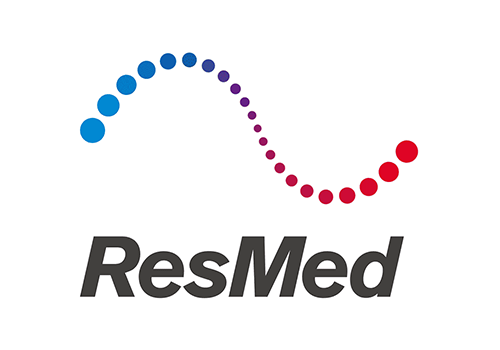Follow Us on Social Media ——>
Sign Up for our Online Patient Group: Pulmonary Chat
The Right2Breathe Pulmonary Chat Online Patient Support program is a FREE online chat and live video conference, hosted three times per months with medical experts providing presentations and answering patient and caregiver questions about living with Asthma, COPD, Pulmonary Fibrosis, and other respiratory diseases.

OUR MISSION
It is the Mission of Right2Breathe® to provide Education, Awareness, Free Screening, and Resources for people who are currently diagnosed or at higher risk of being diagnosed with respiratory disease. We believe that Everybody has a Right2Breathe.
Right2Breathe was founded on the powerful idea that people can overcome difficult obstacles when they allow their passions in life to inspire them. The old adage, “When you do what you love, you don’t work a day in your life” applies to much more than just one’s career choices.
We believe that the world is a better place when people use their gifts and talents to follow their dreams. Our mission is to inspire, educate, and empower people living with lung disease to rekindle the fire for their passions while providing the information necessary for them to take action. This will help them renew their commitment to their own wellness while inspiring other members of the respiratory patient community. In addition to the patient community, we provide education for caregivers who support them and the clinicians who treat people living with respiratory disease.
We achieve our mission through Lung Health initiatives, multiple outreach and educational programs.
Our Valued Partners
We’re on this journey – together!
Right2Breathe® partners with like-minded non-profit organizations, healthcare providers, medical device manufacturers, and pharmaceutical companies who are dedicated to improving the quality of life for those living with a respiratory disease.










What is COPD?
Chronic Obstructive Pulmonary Disease (COPD) is a progressive lung disease that obstructs airflow, making it difficult to breathe. It encompasses a group of lung conditions including chronic bronchitis and emphysema, often caused by long-term exposure to irritants such as cigarette smoke, air pollution, or occupational dust.
One of the primary hallmarks of COPD is the narrowing of the airways, typically due to inflammation and excessive mucus production. This obstruction makes it challenging for air to flow in and out of the lungs, leading to symptoms like coughing, wheezing, shortness of breath, and chest tightness. These symptoms tend to worsen over time and can significantly impact an individual’s quality of life.
While COPD is a progressive disease with no cure, early diagnosis and appropriate management can help slow its progression and alleviate symptoms. Treatment strategies often include lifestyle changes such as smoking cessation, pulmonary rehabilitation programs to improve lung function, and medications like bronchodilators and corticosteroids to alleviate symptoms and reduce inflammation.
In severe cases, supplemental oxygen therapy or surgical interventions like lung volume reduction surgery or lung transplantation may be necessary. However, prevention remains the best approach, emphasizing the importance of avoiding tobacco smoke and other environmental pollutants, as well as maintaining a healthy lifestyle.
COPD is a significant public health concern globally, affecting millions of people and representing a leading cause of morbidity and mortality. It not only imposes a substantial burden on affected individuals but also places a considerable strain on healthcare systems and economies.
Therefore, raising awareness about COPD, its risk factors, and effective management strategies is crucial in reducing its prevalence and improving outcomes for those living with the disease. By fostering a comprehensive approach that integrates prevention, early detection, and personalized treatment, we can strive towards better respiratory health and a higher quality of life for individuals affected by COPD.
Take Our COPD Risk Assessment Survey
What is Asthma?
Asthma is a chronic respiratory condition characterized by inflammation and narrowing of the airways, leading to recurrent episodes of wheezing, coughing, chest tightness, and shortness of breath. It is a common condition that affects people of all ages, from children to older adults, and its prevalence has been steadily increasing worldwide.
The exact cause of asthma is not fully understood, but it is believed to involve a combination of genetic predisposition and environmental factors. Triggers such as allergens (e.g., pollen, dust mites, pet dander), respiratory infections, air pollution, tobacco smoke, and physical exertion can provoke asthma symptoms by causing the airways to become inflamed and constricted.
During an asthma attack, the muscles surrounding the airways tighten (bronchoconstriction), and the lining of the airways becomes swollen and produces excess mucus, further obstructing airflow. This results in the characteristic symptoms of asthma, which can range from mild to severe and may vary in frequency and intensity from person to person.
While asthma cannot be cured, it can be effectively managed with proper treatment and lifestyle modifications. The cornerstone of asthma management is the use of medications such as bronchodilators (e.g., beta-agonists) to relax the airway muscles and corticosteroids to reduce inflammation. Long-term control medications are used to prevent asthma symptoms and exacerbations, while quick-relief medications provide rapid relief during acute episodes.
In addition to medications, asthma management often includes identifying and avoiding triggers, maintaining a healthy lifestyle, and having a personalized asthma action plan developed in collaboration with a healthcare provider. Regular monitoring of symptoms and lung function, along with ongoing education and support, are essential components of successful asthma management.
By implementing comprehensive asthma management strategies, individuals with asthma can achieve good control of their symptoms, minimize the impact of the condition on their daily lives, and reduce the risk of severe exacerbations and complications. With proper care and support, people with asthma can lead active and fulfilling lives while effectively managing their condition.
Latest News from Right2Breathe®
Right2Breathe® and Cleveland Clinic to Provide Free Screenings for Lung Health Expo at NHRA Norwalk National Event
Flemington, NJ – NHRA Nitro Driver Joe Morrison’s Right2Breathe® Project has teamed up with the highly acclaimed Cleveland Clinic to present the “Put Your Lungs on the Dyno” Lung Health Screening Project at the 2024 Summit Racing Equipment NHRA Nationals. The New...
Right2Breathe® Launches Race Against Lung Cancer Campaign
The Race Against Lung Cancer initiative builds off momentum established by Sound Up for Lung Cancer – a campaign created by Novartis. This program aims to change the conversation concerning the stigmas associated with the diagnosis of Lung Cancer.
Somerset Patriots Hosting Right2Breathe® Charity Fundraiser Car Show
Flemington-based Non-Profit Hosting “Thunder in the Park” Car Show at TD Bank Ballpark Saturday September 5th, 2020. Bridgewater, NJ – For the past two years, the Somerset Patriots have partnered with Right2Breathe®, a Flemington, NJ-based 501 (c)(3) non-profit...





